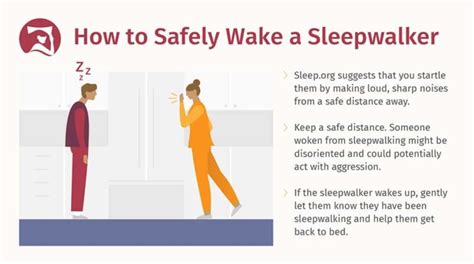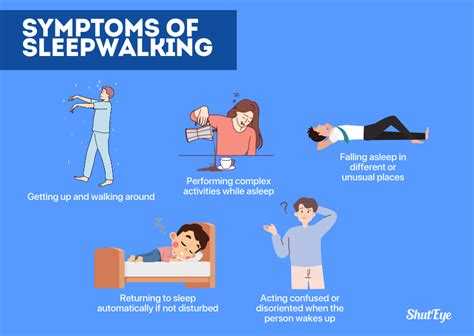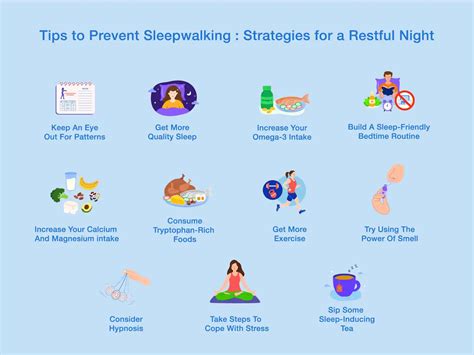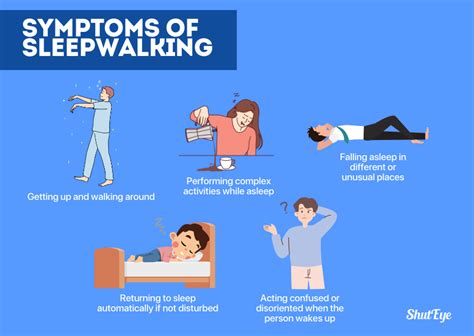Intro
Learn about sleep walking in kids, also known as somnambulism, and its causes, symptoms, and treatment options, including sleep disorders and nighttime behaviors.
Sleep walking, also known as somnambulism, is a common sleep disorder that affects many children. It is estimated that up to 40% of children will experience sleep walking at some point in their lives. Sleep walking can be a concerning and sometimes frightening experience for parents, but it is essential to understand that it is a relatively normal part of childhood development. In this article, we will delve into the world of sleep walking in kids, exploring its causes, symptoms, and treatment options.
Sleep walking can occur in children of all ages, but it is most common in children between the ages of 4 and 12. During this stage, children's brains are still developing, and their sleep patterns are not yet fully established. Sleep walking can be triggered by a variety of factors, including sleep deprivation, stress, and certain medical conditions. In some cases, sleep walking can be a sign of an underlying sleep disorder, such as sleep apnea or restless leg syndrome.
Sleep Walking Causes and Triggers

Genetic Predisposition
Genetic predisposition plays a significant role in sleep walking. Children who have a family history of sleep walking are more likely to experience it themselves. Research has shown that sleep walking can be inherited, and children who have a parent or sibling who sleep walks are more likely to develop the condition.Sleep Environment
The sleep environment can also contribute to sleep walking. Children who sleep in a room that is too hot or cold, or who have an irregular sleep schedule, may be more likely to experience sleep walking. Additionally, children who sleep in a room with a lot of noise or distractions may have difficulty falling asleep or staying asleep, which can increase the risk of sleep walking.Symptoms of Sleep Walking

Types of Sleep Walking
There are two main types of sleep walking: simple and complex. Simple sleep walking involves getting out of bed and walking around, while complex sleep walking involves performing more complex tasks, such as cooking or driving. Complex sleep walking is less common than simple sleep walking, but it can be more dangerous and requires immediate attention.Treatment Options for Sleep Walking

Lifestyle Changes
Lifestyle changes can play a significant role in reducing the frequency and severity of sleep walking episodes. Parents can help their child by establishing a consistent sleep schedule, creating a sleep-conducive environment, and avoiding stimulants before bedtime. Additionally, parents can encourage their child to engage in relaxing activities before bedtime, such as reading or taking a warm bath.Medical Interventions
In some cases, medical interventions may be necessary to treat sleep walking. Medications such as benzodiazepines or antidepressants may be prescribed to help regulate sleep patterns and reduce the frequency of sleep walking episodes. Additionally, parents may be advised to keep a sleep diary to track their child's sleep patterns and identify potential triggers for sleep walking.Prevention Strategies

Establishing a Bedtime Routine
Establishing a bedtime routine can help signal to the child that it's time for sleep. A consistent bedtime routine can include activities such as reading, storytelling, or singing, and can help the child wind down and prepare for sleep.Creating a Sleep-Conducive Environment
Creating a sleep-conducive environment is essential for preventing sleep walking. Parents can help their child by ensuring the room is dark, quiet, and at a comfortable temperature. Additionally, parents can invest in blackout curtains, earplugs, or a white noise machine to create a sleep-friendly environment.Risks and Complications

Injuries and Accidents
Injuries and accidents are a significant risk for children who sleep walk. Children who sleep walk may be more likely to experience falls, cuts, or bruises, and may be at risk of accidents, such as drowning or poisoning. Parents can help reduce the risk of injuries and accidents by ensuring the child's safety and taking steps to prevent sleep walking.Sleep Disruptions
Sleep disruptions are common in children who sleep walk. Sleep walking can disrupt the child's sleep patterns, leading to sleep deprivation, daytime fatigue, and mood disturbances. Additionally, sleep walking can disrupt the sleep patterns of other family members, leading to sleep deprivation and fatigue.Conclusion and Next Steps

If you suspect that your child is sleep walking, it is essential to consult with a healthcare professional to rule out any underlying medical conditions. With the right treatment and prevention strategies, children can overcome sleep walking and develop healthy sleep patterns.
What is sleep walking?
+Sleep walking, also known as somnambulism, is a sleep disorder that involves getting out of bed and walking around during sleep.
What are the causes of sleep walking?
+Sleep walking can be caused by a combination of factors, including genetic predisposition, sleep environment, and underlying medical conditions.
How can I prevent sleep walking in my child?
+Parents can help prevent sleep walking by establishing a consistent sleep schedule, creating a sleep-conducive environment, and avoiding stimulants before bedtime.
What are the risks and complications of sleep walking?
+Sleep walking can pose several risks and complications, including injuries, accidents, and sleep disruptions.
How can I help my child overcome sleep walking?
+Parents can help their child overcome sleep walking by consulting with a healthcare professional, establishing a consistent sleep schedule, and creating a sleep-conducive environment.
We hope this article has provided you with a comprehensive understanding of sleep walking in kids. If you have any further questions or concerns, please don't hesitate to reach out. Share your thoughts and experiences with us, and let's work together to promote healthy sleep patterns in children.
